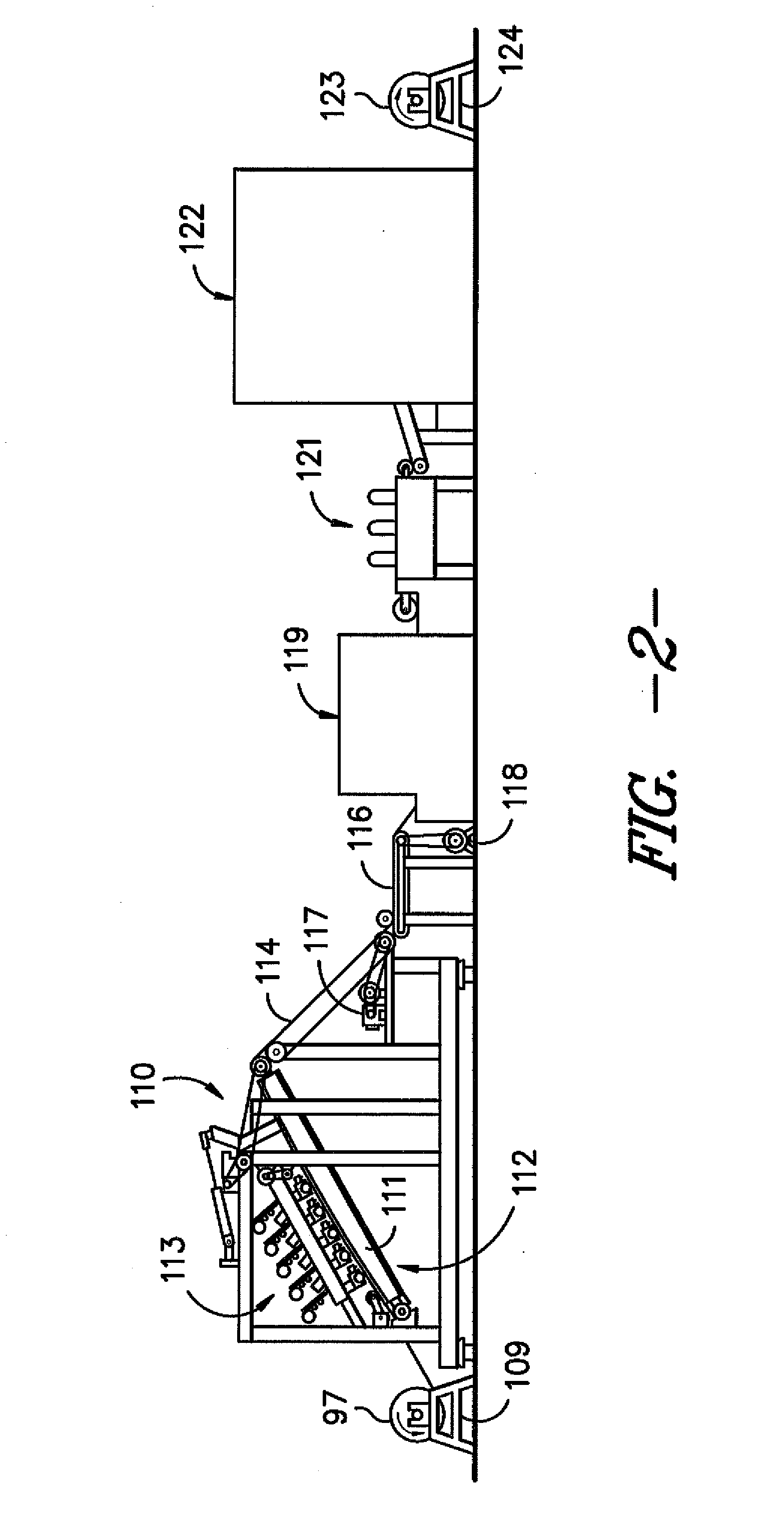Printed Textile Substrate and Process for Making
a technology of textile substrate and printing process, which is applied in the directions of weaving, dyeing process, transportation and packaging, etc., can solve the problems of inability to provide solid shades and tile edge matching, time-consuming and expensive two-step process, and inability to provide solid shades and tile to tile edges
- Summary
- Abstract
- Description
- Claims
- Application Information
AI Technical Summary
Benefits of technology
Problems solved by technology
Method used
Image
Examples
example 1
[0071]A printed floorcovering article was prepared as follows:
[0072]A base substrate was constructed of 35 oz / yd tufted nylon 6,6 loop carpet containing an acid dyeable yarn component (yarn dyed with acid dyes) and a basic dyeable yarn component (yarn dyed with basic dyes), tufted through a primary backing from Mattex USA LLC. The acid dyeable yarn was 55% of the tufted face weight and the basic dyeable yarn was 45% of the tufted face weight in a checkerboard pattern. The acid dyeable yarn was a 2 ply, 3 ends per tufting needle of a deep dye (type 1410) and a regular dye (type 1360), 21 denier per filament fiber, both available from Solutia. The basic dyeable yarn was a 2 ply, 2 ends per tufting needle of a bright cationic (type 1730), 25.4 denier per filament fiber available from Solutia. All yarn was in an undyed state. However, it should be noted that solution dyed yarn may optionally be used.
[0073]The base substrate was first run through a bath of 65° C. water and extracted, lea...
examples 2-4
[0076]Examples 2-4 used the same base material as was used in Example 1. Each base material was printed using a Millitron® digital printing machine (available from Milliken & Company, Spartanburg, S.C.). The Millitron® machine was preloaded with 10 aqueous dye solutions as shown in Table B.
TABLE BMillitron ® Color Bar LoadingsMillitron ® Color Bar Number12345678910AmountProduct(grams / liter)Telon Red0.3300000.662.770.0350.0390.012BRL MicroaTelon Blue0000002.240.12840.1030.035BRL MicroaTelon Yellow0.682500001.3656.8240.13080.2880.08964RaTelon Black3.600007.20000AMFaErionyl Black00.17470.17470000000MRbErionyl Yellow00.05990.05990000000MRbIsolan00.0070.0070000000Bordeaux RaAstrazon00000.02600000Yellow 7GLLaSeveron Red00000.03800000YCN PWDcSeveron Blue00004.500000NCN LiqcAcetic Acidd0.50.50.500.50.50.50.50.50.5S.A. 30e3.53.53.503.53.53.53.53.53.5Anti-4440444444precipatant60NfFT24g3330333333Poly OX00002.52.52.52.52.52.5N12KhNoxaxan 80,3.753.753.750000000xanthan gumiaavailable from Dyestar...
example 2
[0077]All colors were printed in predetermined areas and all the dye solutions were at a viscosity of 500 centipoise (cp). The base substrate was pretreated at 20% wet pick-up (based on substrate face fiber weight) with an aqueous solution of Polycat M-30, available from Peach State Labs Inc. of Rome, Ga. All the dye solutions were acid dyes only and were printed at 200% WPU.
[0078]The printing floorcovering article did not exhibit any color separation or differentiation. Both the acid dyeable and the basic dyeable yarns were the same color within each of the preselected print areas.
[0079]A grayscale photograph of the printed floorcovering article is shown in FIG. 5. As shown in FIG. 5, color bands A through H were created. Each of the color bands was the result of printing from a specific color bar or combination of color bars. Thus, using Table B as a guide, Band “A” was Color Bar 1, Band “B” was Color Bar 2, Band “C” was Color Bar 3, Band “D” was a 50:50 blend of Color Bars 2 and ...
PUM
| Property | Measurement | Unit |
|---|---|---|
| Viscosity | aaaaa | aaaaa |
| Color | aaaaa | aaaaa |
| Viscosity | aaaaa | aaaaa |
Abstract
Description
Claims
Application Information
 Login to View More
Login to View More - R&D
- Intellectual Property
- Life Sciences
- Materials
- Tech Scout
- Unparalleled Data Quality
- Higher Quality Content
- 60% Fewer Hallucinations
Browse by: Latest US Patents, China's latest patents, Technical Efficacy Thesaurus, Application Domain, Technology Topic, Popular Technical Reports.
© 2025 PatSnap. All rights reserved.Legal|Privacy policy|Modern Slavery Act Transparency Statement|Sitemap|About US| Contact US: help@patsnap.com



